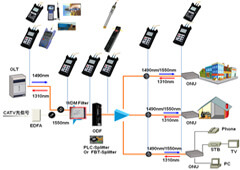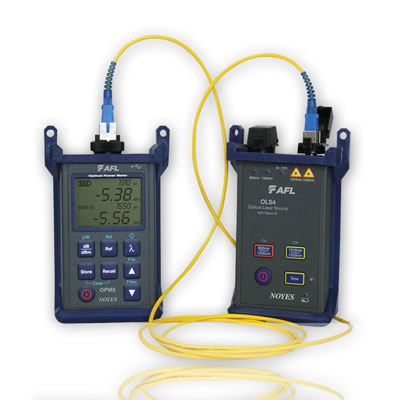Modern Robotic Vision Systems for Enhanced Automation and Precision Tasks
Modern Robotic Vision Systems for Enhanced Automation and Precision Tasks
Blog Article
Vital Functions to Look for in Optical Fibre Testing Devices
When assessing optical fiber testing tools, a number of essential functions warrant mindful consideration to ensure optimum efficiency and dependability. Compatibility with existing sector requirements boosts functionality, while innovative measurement abilities, including TDR and OTDR screening, offer essential insights right into network honesty. Comprehending these functions will certainly shed light on exactly how to pick the best tools for your specific requirements.
Precision and Accuracy
Accuracy and precision are crucial specifications in the analysis of optical fibre testing devices. These 2 characteristics make sure that measurements show real efficiency of fiber optic systems, which is crucial for reliable network installation, maintenance, and troubleshooting. Precision describes the distance of a measured value to the actual value, while precision signifies the repeatability of dimensions under unchanged conditions.
When selecting optical fibre testing devices, it is important to consider instruments that supply high precision and precision to reduce mistakes in information analysis. Instruments such as optical time-domain reflectometers (OTDRs) and power meters should have calibration systems to make certain constant performance over time. Additionally, the specifications offered by producers ought to detail the devices's measurement uncertainty, which directly impacts the integrity of examination outcomes.
Moreover, the efficiency of optical fibre screening tools can be affected by ecological aspects, such as temperature and humidity. Choosing tools created to alleviate these variables will enhance dimension fidelity. To conclude, purchasing optical fiber screening tools with robust accuracy and accuracy attributes is essential for preserving optimal network efficiency and making certain the stability of fiber optic interactions.

User-Friendly Interface
The performance of optical fibre screening tools is not entirely established by its accuracy and precision; an easy to use user interface plays a significant function in boosting operational effectiveness. A properly designed interface streamlines the communication in between the technician and the devices, permitting for a more user-friendly understanding of intricate functions.
Secret functions of a straightforward interface include clear navigating food selections, sensible layouts, and conveniently accessible controls. These elements allow specialists to do examinations quickly without extensive training, lowering the chance of customer error - ofda. Visual indicators such as progress bars, notifies, and visual depictions of information can dramatically enhance the individual experience by giving prompt feedback on the screening procedure.
In addition, personalized setups can additionally improve operations by permitting customers to readjust specifications according to particular testing requirements. This adaptability not just conserves time however also ensures that the equipment meets varied application requirements.
Incorporating assistance features, such as tooltips and detailed manuals, right into the interface can better equip customers, advertising self-sufficiency and self-confidence in running the devices. Inevitably, robotic vision an easy to use interface is necessary for making the most of the possibility of optical fibre screening equipment, causing more effective and reliable screening outcomes.
Mobility and Durability
Mobility and longevity are essential characteristics of optical fibre screening tools, ensuring that it can endure the roughness of numerous settings while remaining very easy to transportation. Professionals frequently work in varied settings, from telecoms centers to remote installations, making it crucial that screening devices are light-weight and small (ofda). Devices created with mobility in mind commonly features ergonomic handles and cases that help with simple and easy motion, therefore improving operational effectiveness on-site
Sturdiness is similarly vital, as optical fiber testing equipment is typically exposed to harsh problems, consisting of temperature fluctuations, wetness, and physical impacts. Devices created with rugged materials such as strengthened plastics or metal housings are much better matched for these settings, decreasing the risk of damages throughout use and transport. Additionally, tools with water and dirt resistance scores, such as IP ratings, ensures trustworthy efficiency in difficult conditions.
Compatibility With Requirements
Making certain compatibility with market standards is crucial for optical fibre testing equipment, as it straight affects the integrity and credibility of examination results. Optical fibre networks are subject to rigorous performance standards developed by various companies, including the Telecoms Market Organization (TIA) and the International Electrotechnical Commission (IEC) Evaluating equipment must follow these criteria to guarantee that dimensions correspond and equivalent across various systems and settings.
When selecting optical fiber screening equipment, users need to confirm that the tool meets pertinent standards essential to their particular application, such as those pertaining to attenuation, data transfer, and crosstalk. Devices that is compliant with well established requirements not only assists in achieving precise outcomes however also assists in interoperability among devices from various suppliers.
Additionally, compatibility with requirements makes certain that the equipment can be utilized in governing conformity scenarios, which is critical for jobs in industries such as telecoms, aerospace, and armed forces applications. Consequently, purchasing optical fiber screening equipment that aligns with present market criteria is an essential element of keeping quality control and achieving ideal network efficiency.
Advanced Measurement Abilities
Advanced measurement capabilities are a defining attribute of modern optical fibre testing devices, permitting extensive analysis of network performance. These capabilities ensure that technicians can evaluate critical specifications such as signal loss, diffusion, and transmission capacity, which are essential for keeping optimum interaction performance.
One secret element is the ability to conduct time-domain reflectometry (TDR) and optical time-domain reflectometry (OTDR) tests. These methods allow customers to recognize mistakes, gauge the size of fibres, and determine the area of flaws with amazing accuracy - ofda. In addition, sophisticated equipment often includes the capability to measure optical power degrees, helping to evaluate the overall wellness of the network and guarantee conformity with the required specs.
In addition, some testing tools use innovative algorithms for real-time analysis, allowing quicker diagnosis and troubleshooting. In final thought, investing in optical fiber screening tools with innovative dimension capabilities is important for guaranteeing network reliability and performance in today's demanding telecoms landscape.
Conclusion

Report this page